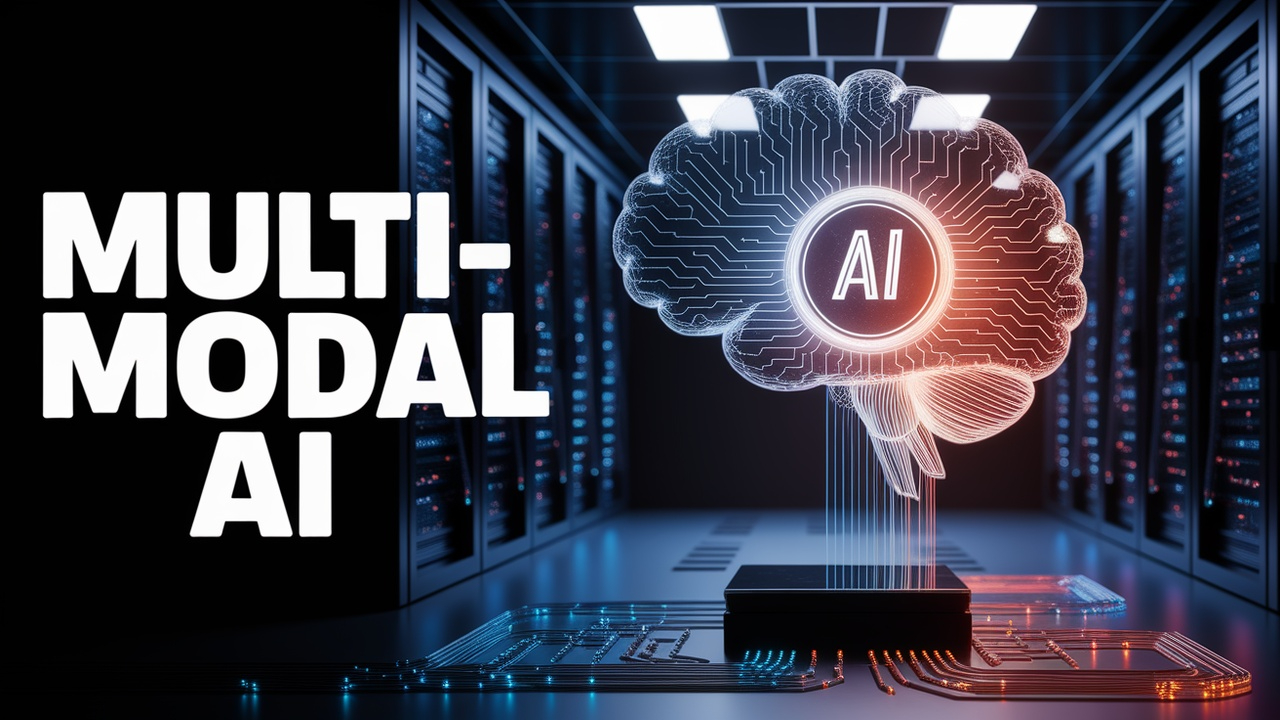
This course provides an in-depth exploration of multi-modal artificial intelligence, focusing on the integration of visual and linguistic data. Participants will learn the foundational concepts, techniques, and applications that drive advancements in this innovative field.
Course Levels
-
Level 1: Introduction to Multi-Modal AI
This level covers the basics of artificial intelligence and the importance of multi-modal systems. Students will gain an understanding of how vision and language can be combined to create powerful AI applications.
-
Level 2: Fundamentals of Computer Vision
This level delves into the fundamentals of computer vision, including image processing, feature extraction, and object detection. Learners will understand how visual data is interpreted by AI systems.
-
Level 3: Natural Language Processing Basics
Focusing on the linguistic side, this level covers the fundamentals of natural language processing (NLP). Students will learn about text representation, sentiment analysis, and basic language models.
-
Level 4: Integrating Vision and Language
This level explores techniques for integrating vision and language data, including multi-modal embeddings and attention mechanisms. Students will learn how to build models that can process both types of data simultaneously.
-
Level 5: Advanced Multi-Modal Techniques
This level covers advanced techniques in multi-modal AI, focusing on state-of-the-art models and architectures. Students will learn about transformer models and their applications in vision and language.
-
Level 6: Real-World Applications of Multi-Modal AI
Focusing on practical applications, this level examines how multi-modal AI is used in industries such as healthcare, automotive, and entertainment. Students will work on case studies and projects.
-
Level 7: Capstone Project
In this final level, students will apply their knowledge by working on a capstone project that incorporates both vision and language elements. They will present their projects and receive feedback.
Course Topics
-
Future Trends and Innovations
# Future Trends and Innovations in Multi-Modal AI ## Introduction The future of Multi-Modal AI (Artificial Intelligence) is poised to revolutionize various sectors by integrating and interpreting dat...
-
Importance of Multi-Modal Data
# Importance of Multi-Modal Data Multi-modal data refers to the combination of different types of data sources to enhance understanding and improve performance in artificial intelligence (AI) applica...
-
Image Captioning Techniques
# Image Captioning Techniques Image captioning is a foundational task in the field of multi-modal AI that involves generating descriptive textual captions based on the content of images. This topic e...
-
Introduction to Convolutional Neural Networks (CNNs)
# Introduction to Convolutional Neural Networks (CNNs) Convolutional Neural Networks (CNNs) are a class of deep neural networks that have proven exceptionally effective in the field of computer visio...
-
Project Proposal Development
# Project Proposal Development ## Introduction Developing a project proposal is a critical skill for any professional involved in project management, especially in the field of Multi-Modal AI (Visio...
-
Entertainment and Multi-Modal AI
# Entertainment and Multi-Modal AI Multi-modal AI refers to artificial intelligence systems that can process and interpret multiple forms of data, such as text, images, and audio. In the realm of ent...
-
Visual Question Answering
# Visual Question Answering (VQA) Visual Question Answering (VQA) is a multi-modal AI task that integrates computer vision and natural language processing. The goal of VQA is to provide accurate answ...
-
Image Processing Techniques
# Image Processing Techniques Image processing is a crucial aspect of computer vision, enabling machines to interpret and manipulate visual data. This section covers fundamental image processing tech...
-
Challenges in Multi-Modal Learning
# Challenges in Multi-Modal Learning Multi-modal learning, which involves integrating information from various sources like text, images, and audio, presents a unique set of challenges. This section ...
-
Introduction to Recurrent Neural Networks (RNNs)
# Introduction to Recurrent Neural Networks (RNNs) Recurrent Neural Networks (RNNs) are a class of artificial neural networks designed for processing sequences of data. Unlike traditional feedforward...
-
Case Studies in Healthcare
# Case Studies in Healthcare In this section, we will explore the application of Multi-Modal AI, specifically integrating both vision and language, in the healthcare industry. We will analyze several...
-
Data Collection and Preparation
# Data Collection and Preparation ## Introduction Data collection and preparation are crucial steps in the process of developing Multi-Modal AI systems that integrate both vision and language. The qu...
-
Overview of Vision and Language in AI
# Overview of Vision and Language in AI Multi-modal AI refers to the integration of multiple forms of data, such as images, text, and audio, to create systems that can understand and generate informa...
-
Attention Mechanisms in Multi-Modal AI
# Attention Mechanisms in Multi-Modal AI Attention mechanisms have revolutionized the fields of natural language processing (NLP) and computer vision (CV) by enabling models to focus on relevant part...
-
Advanced Neural Architectures
# Advanced Neural Architectures ## Introduction In the realm of Multi-Modal AI, particularly when combining vision and language, advanced neural architectures play a critical role in improving model ...
-
Basic Concepts in AI and Machine Learning
# Basic Concepts in AI and Machine Learning ## Introduction Artificial Intelligence (AI) and Machine Learning (ML) are foundational components of multi-modal AI, which involves processing and underst...
-
Cross-Modal Retrieval Systems
# Cross-Modal Retrieval Systems Cross-modal retrieval systems are designed to retrieve information from one modality based on queries from another modality. This topic integrates vision and language,...
-
Language Models Overview
# Language Models Overview Language models are a fundamental aspect of Natural Language Processing (NLP) that enable machines to understand and generate human language. In this section, we will explo...
-
Ethics in Multi-Modal AI Applications
# Ethics in Multi-Modal AI Applications ## Introduction As multi-modal AI systems become increasingly prevalent, the ethical implications of their applications grow in importance. Multi-modal AI comb...
-
Sentiment Analysis Basics
# Sentiment Analysis Basics Sentiment analysis is a subfield of Natural Language Processing (NLP) that involves determining the emotional tone behind a series of words. This is especially useful in u...
- And 15 more topics...